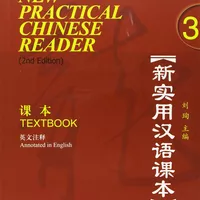Lesson 31 - Converstion 2
A: 听说 泰山 是 中国 最 有名 的 名胜古迹 之一 , 它 的 面积 有 多 大 ?
B: 他 大面积 有 426 平方公里 。
A: 泰山 有 多 高 ?
B: 它 的 最高 山峰 有 1545 米 , 唐代 的 一位 诗人 说 过 :“ 会 当 凌 绝 顶 , 一 览 众 山 小 ”。 意思 是 说 , 只要 登上 泰山 最高 的 山峰 , 你 就 会 觉得 别的 山峰 又 低 又 小 。
Usamos cookies para ayudar a mejorar LingQ. Al visitar este sitio, aceptas nuestras politicas de cookie.

A: 听说 泰山 是 中国 最 有名 的 名胜古迹 之一 , 它 的 面积 有 多 大 ?
B: 他 大面积 有 426 平方公里 。
A: 泰山 有 多 高 ?
B: 它 的 最高 山峰 有 1545 米 , 唐代 的 一位 诗人 说 过 :“ 会 当 凌 绝 顶 , 一 览 众 山 小 ”。 意思 是 说 , 只要 登上 泰山 最高 的 山峰 , 你 就 会 觉得 别的 山峰 又 低 又 小 。
To hear audio for this text, and to learn the vocabulary sign up for a free LingQ account.